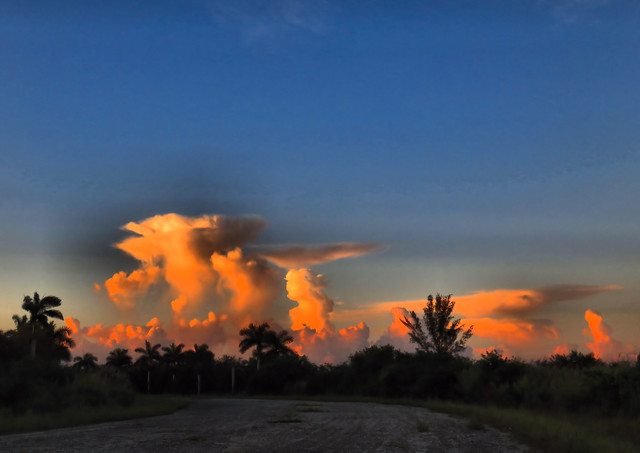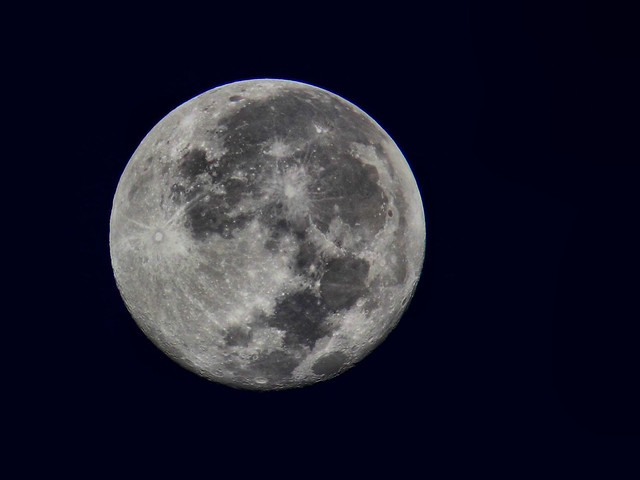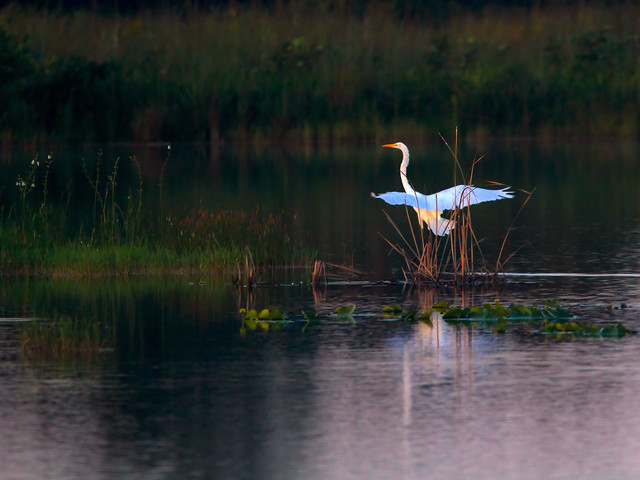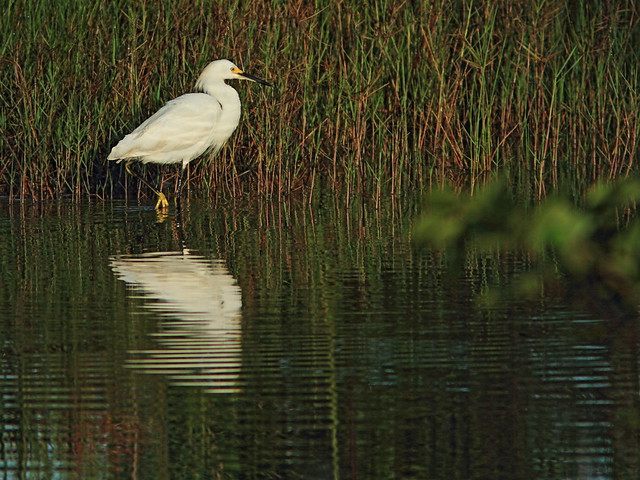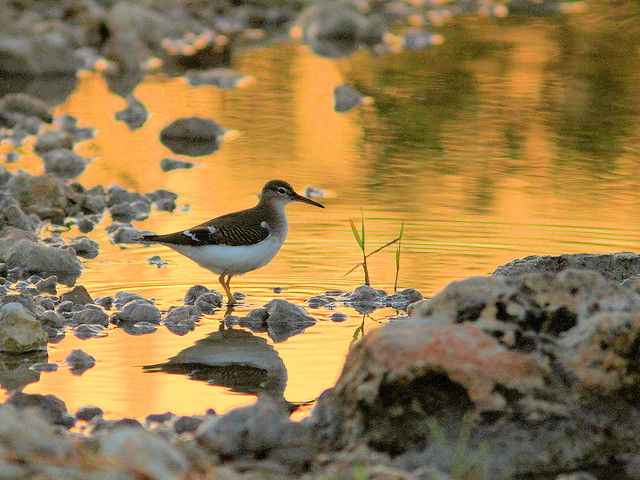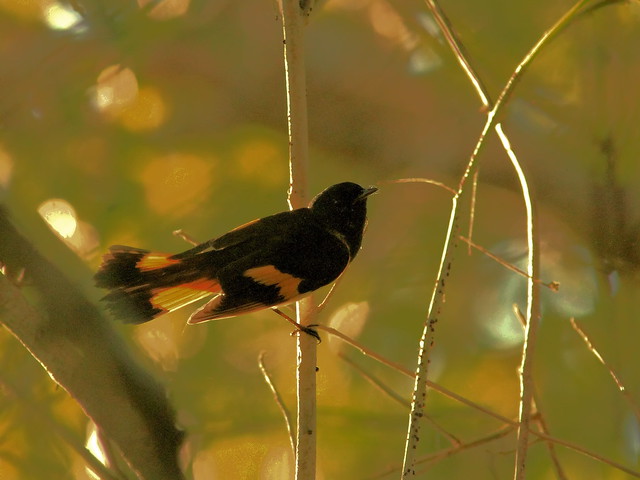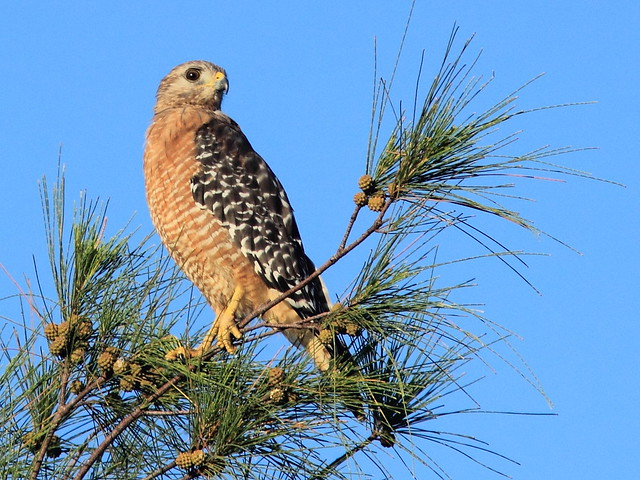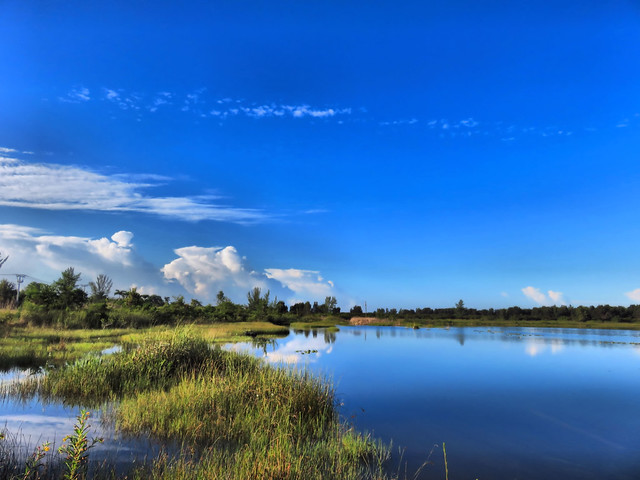Looking south at sunrise over the local south Florida wetlands:
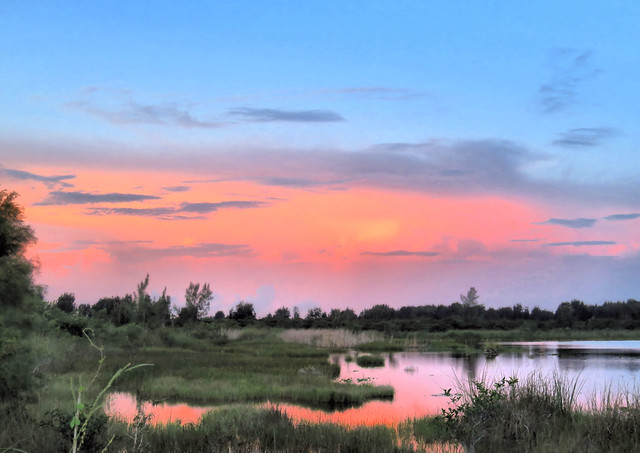
One benefit of sitting still is that I am less of a disturbance to wildlife. I am also a bit more attuned to what is going on about me.
This was the case when I noticed that a Loggerhead Shrike was interacting with a Northern Mockingbird. Every time the shrike hovered over a small bush the mockingbird immediately attacked it.

This happened several times, so I assumed that the mockingbird was protecting its nest or one of its young from the "Butcher Bird."

However, the object of the shrike's attention was actually a fledgling Northern Cardinal:
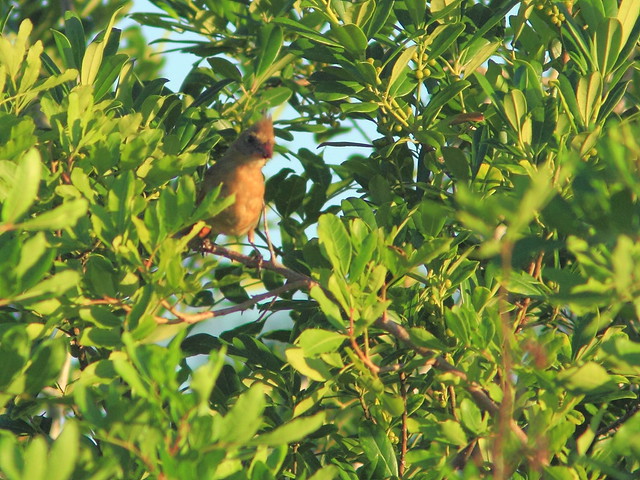
A few more mockingbirds had joined the fray, and a Blue Jay was calling incessantly. This attracted other jays and they, too made swipes at the shrike.
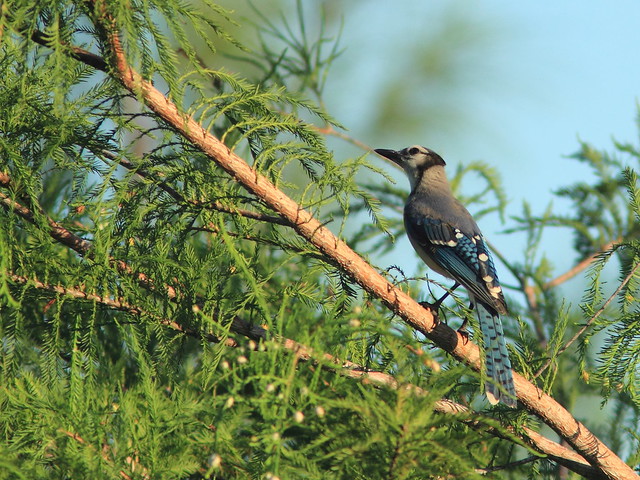
The little cardinal is visible to the left in this photo:
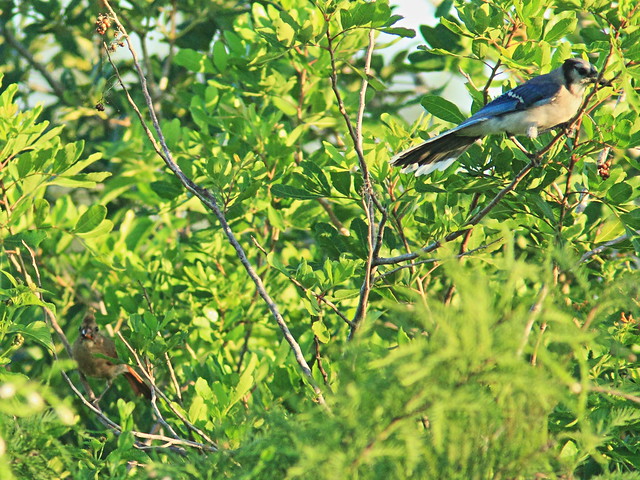
Interestingly, a single adult female cardinal moved about excitedly but did not join in attacking the predatory bird.
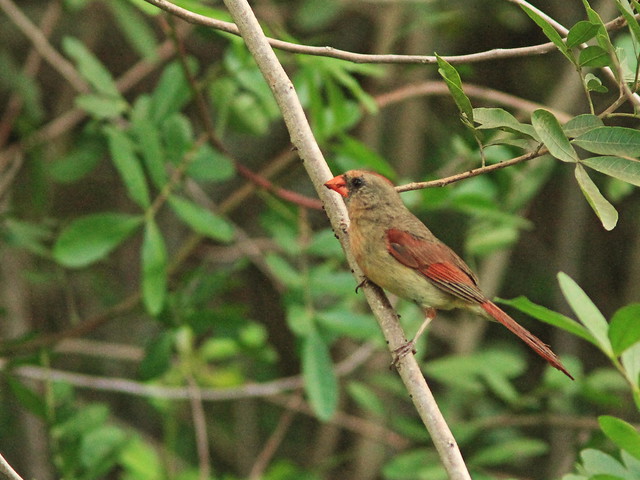
The shrike retreated ...
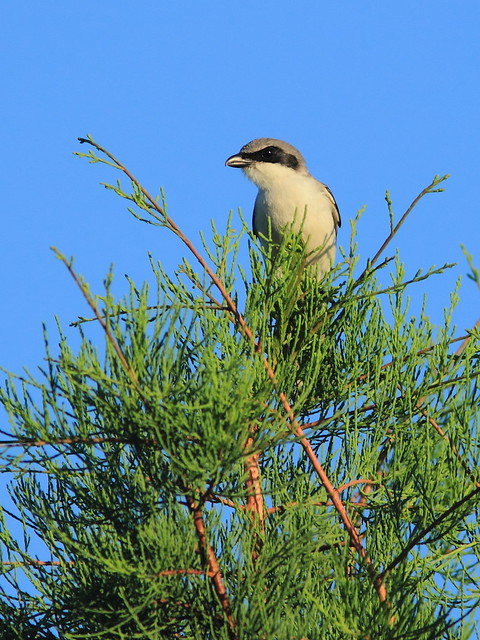
...and the young cardinal came out into the open:

Before our neighborhood was drained, filled and built out some 15 years ago, locals hunted wild pigs in what was then swampy agricultural land. Some of the old trails were said to have been created by hunters of feral pigs. However, despite hiking and birding here frequently I never found evidence of a porcine presence-- until this year.
The first signs that suggested that pigs may have invaded were copious piles of odoriferous feces... or were they possibly those of a bear?:
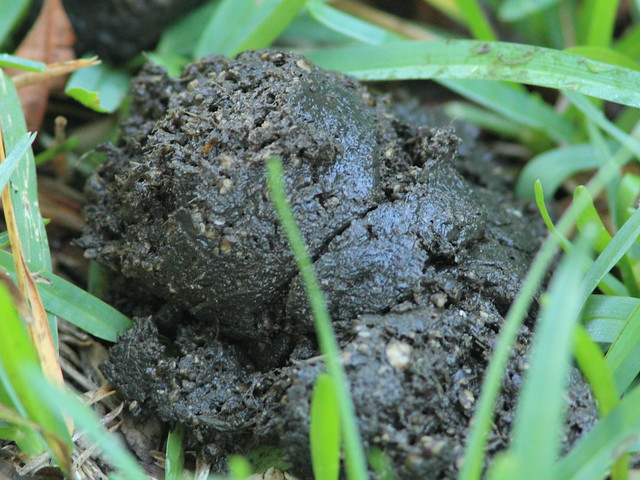
Then, one dark morning well before sunrise I ventured a short ways down a side trail to the edge of a wet meadow, hoping to surprise a night-heron or maybe a deer. Instead, I made out the form of a dark creature. It was moving very slowly as if grazing:
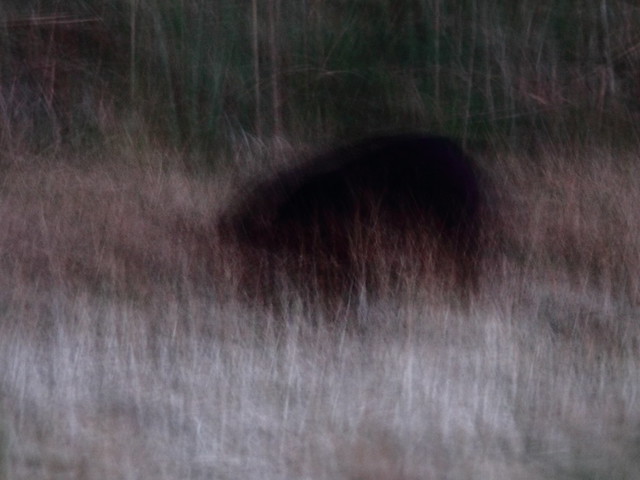
I first thought it was indeed a bear. I quietly watched until the light improved, when another very poor photo reassured me that it was only a pig, but quite a large one:
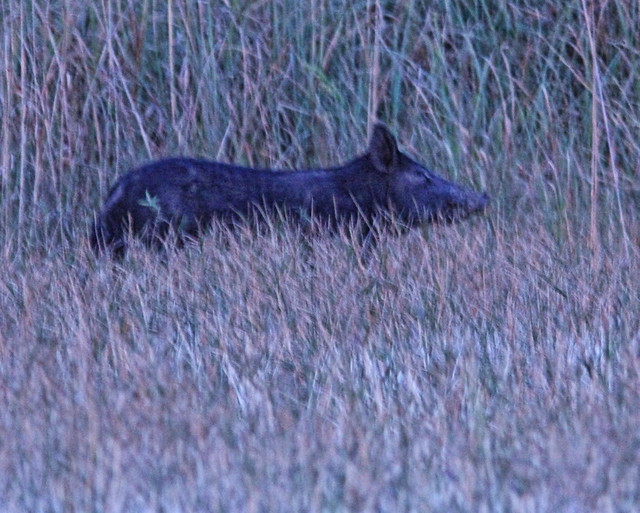
My suspicions were thus confirmed. So far I have found at least two sets of pig tracks, one with hooves that were 3 inches long and others which measured 2 inches. The scat deposits have increased in number and volume, making me wonder how many are out there.
Since then, Mary Lou and I have seen the same animal three more times along the trail, always before sunrise and running away. I still have not gotten a decent photo because of the poor light, but am certain it is a male.
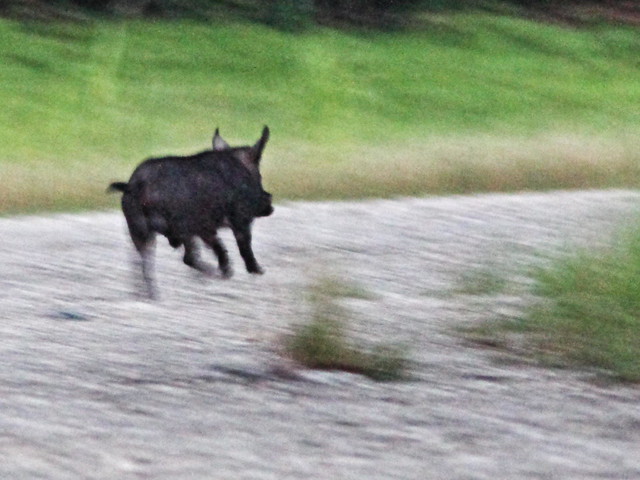
They can be aggressive, so I make sure to carry pepper spray.
This week the lake provided excellent reflections on still mornings. A Great Egret lifted off into the first rays:
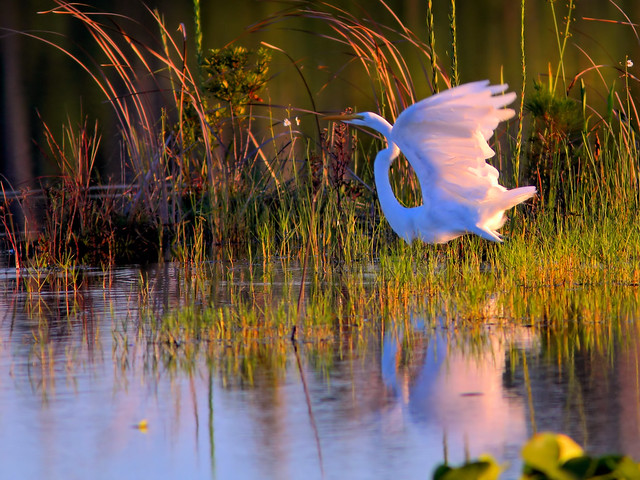
At nearby Chapel Trail Nature Preserve, the boardwalk served as my fence photo, though I was actually concentrating on the clouds:
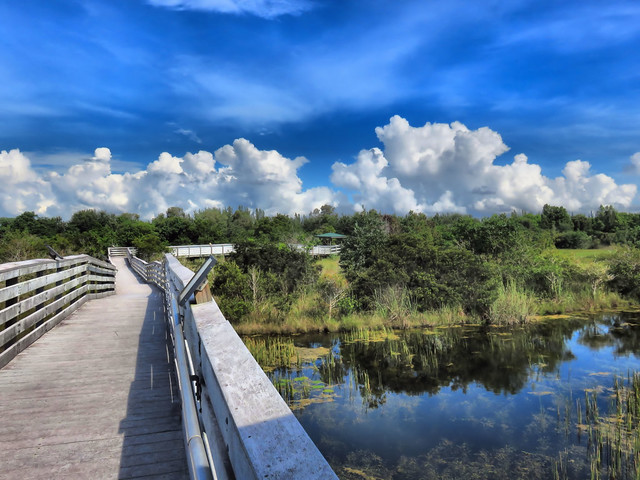
Thick patches of Bidens alba are in bloom, with tiny daisy-like flowers ready to produce millions of the little two-toothed nettles which cling to pant legs and socks-- "beggar's lice." (Bidens means "two teeth." Just realizing that is the name of our Vice President. I never noticed that about him!)
In Florida the lowly Bidens is an important source of nectar for honeybees and butterflies, in third place after non-native citrus and Saw Palmetto. It therefore deserves respect, which I will grant by trying not to walk through a patch after it goes to seed!
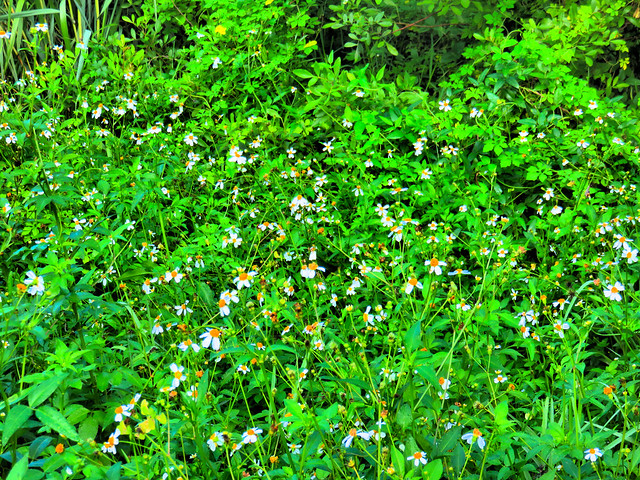
A female Julia heliconian sips nectar from a Bidens blossom:
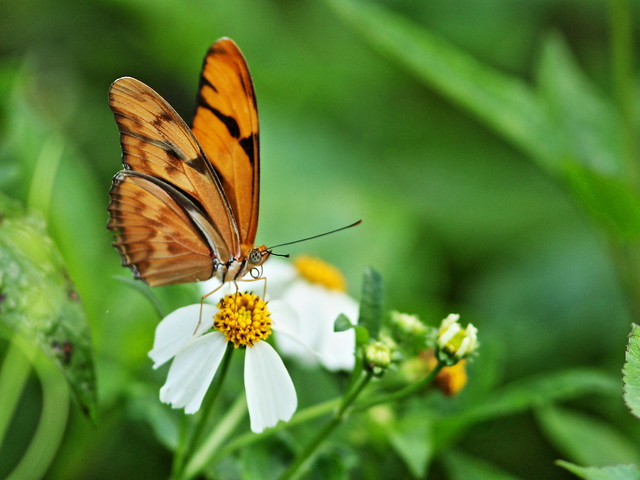
= = = = = = = = = = = = = = =
Linking to Misty's CAMERA CRITTERS,
Linking to Eileen's SATURDAY'S CRITTERS,
Linking to GOOD FENCES by Tex (Theresa).
Linking to WEEKEND REFLECTIONS by James
Linking to BirdD'Pot by Anni
Linking to Wild Bird Wednesday by Stewart
Linking to Today's Flowers Friday by Denise
Linking to Wordless Wednesday (on Tuesday) by NC Sue
________________________________________________
Please visit the links to all these memes to see some excellent photos on display
________________________________________________
